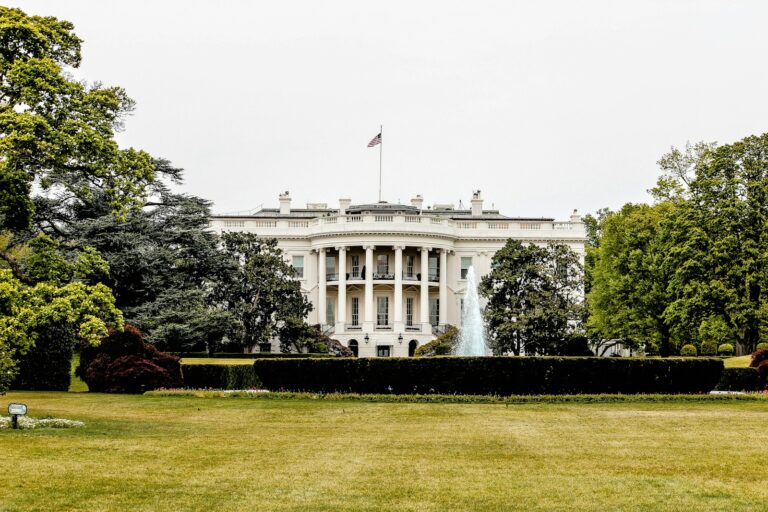Scarlett Johansson has spoken out against the rapid growth of artificial intelligence. In a recent interview, she warned that AI could harm art and society. She said that true performance soul cannot be replaced by machines. Her words matter because they remind us that art comes from the heart.
Soulfulness that AI Cannot Replicate
Scarlett believes that no machine can copy the rich emotions of a human actor. She said that a digital image or voice may look real, but it lacks true depth. Human actors fill their performances with feelings that come from life and experience. The actress explained that real art must have soul and emotion. In her view, no computer code can mimic that warmth.
She added that while computers may help in some areas, they must never replace the human touch in art. Scarlett urged the film industry to mix technology with real creativity. She stressed that artists are born with a unique gift. This gift of emotion and soul is hard to duplicate. The actress made it clear that technology should support, not overtake, human talent.
AI and the Erosion of Trust
Beyond the film world, Scarlett warned that AI might change how we trust one another. Deepfake videos and voice cloning make it hard to tell what is real. Her worry grows as these tools become more common in everyday life. She said that the spread of AI-generated fake news can mislead people and destroy trust. Trust in a shared reality is important for society to work well.
People rely on shared truths to feel safe and connected. When AI blurs these lines, it becomes difficult for us to know what to believe. This is a serious problem that affects all of us. Scarlett called on experts and leaders to set clear rules for AI use. She hopes that these rules will slow down harmful technology.
A Personal Battle Against AI Misuse
Scarlett has faced personal challenges with AI misuse. In recent years, her voice and image were used without her permission. She had to fight hard to protect her image. At one time, a project used a digital assistant that mimicked her voice. She did not allow this project, yet a similar voice appeared online. This made her very upset.
The actress took legal action to remove the fake version of her voice. Her actions protected her image and reminded us that our voices matter. Soon after, a fake video started circulating on the internet. In the video, celebrities like her said things they never agreed to say. This hurt many people and sparked widespread anger. Scarlett used this chance to call for stronger rules that protect artists.
The Need for Clear AI Rules
Scarlett thinks that clear guidelines will help protect everyone. She wants lawmakers and industry leaders to act now. Her recommendations focus on ethical AI use and creativity. She encourages laws that protect a person’s voice and likeness. These laws will support truth and stop the spread of false information.
She asked for rules that can help prevent the misuse of AI. These guidelines should maintain respect for creative work. They can help artists feel safer and more respected. Scarlett urged every decision maker to consider these rules before technology goes too far. She wants to see a future where art remains honest and real.
Embracing AI with Caution
Technology can be a great tool if used wisely. The film industry already uses AI for some tasks. However, there is a thin line between using technology and replacing human work. Scarlett advises professionals to learn how to use these tools well. She believes that creators should adopt AI that supports their work. At the same time, they must keep control over their own talent.
Artists need to stay alert and protect what makes them unique. They must watch how their images and voices appear online. Creators should also speak up when rules are not followed. When they work side by side with technology, art can flourish without losing its soul. Her message is clear: Know the limits and use new tools responsibly.
Protecting Creative Integrity
For many years, the creative industry has depended on human talent. The unique gifts of pain, joy, and love come solely from the heart. Scarlett reminds us that no machine can capture these feelings. She stresses that authenticity is key to survival. Films and TV shows gain strength from genuine performances that draw viewers in. Creators must hold on to their originality while exploring digital tools.
In this new era, fans still search for honesty and raw emotion. Real stories trigger real emotions. Advertisers and storytellers understand that honesty builds bonds. They know that genuine art touches the hearts of many. Scarlett’s words help guide them to keep trust at the center of creation.
Steps for Aspiring Creators
Young actors and new creators must take note of her advice. They should remember that authenticity gives them an edge over computer-generated imitations. Creators must practice their skills, refine their talent, and nurture their personal style. Teaching new artists about both art and technology is vital. Aspiring talents can use digital tools for better production while ensuring their work remains unique.
It is important for creators to monitor how their work is used online. They need to make sure that their identity is protected. Artists are encouraged to learn about the new tools to use them wisely. They must also join groups that advocate for clear ethics in AI use. This will help keep their artistic spirit safe while using modern tools.
A Balanced Future for AI and Art
Stories like Scarlett’s show that progress in technology has its risks. We must balance our love for creative innovation with the need for truth. The entertainment industry can improve without sacrificing honesty. By setting clear rules for ethical AI use, society can benefit from modern tools while keeping art real. This balance will allow art to foster heart and soul in every performance.
The call to action is strong. Today, technology can help us tell stories in new and exciting ways. At the same time, it might bring challenges that hurt how we see truth. Leaders, creators, and fans all play a role in shaping the future. Together, they can decide how AI is used in society. They can choose a path that respects both progress and authenticity.
The conversation about AI and art is just beginning. Many experts, fans, and artists share these concerns. Industry leaders are slowly discussing clear guidelines for ethical AI use. These talks promise to protect voices, images, and artistic identity. As decisions are made, art will remain true to its roots.
Looking Ahead for a Safer Digital World
We look ahead to a digital future where our trust is strong. Future technologies must serve to enhance creativity. They should not diminish real human connection. Scarlett’s warning reminds us to keep careful watch over the changes. We must learn to use technology without losing the warmth of genuine art.
Society will become wiser when we agree on using AI ethically. Clear rules will help stop the spread of fake news and misinformation. These rules also support the rights of artists everywhere. Their voices, faces, and stories deserve protection. When society values these insights, technology will build a better future.
The Human Touch in Storytelling
At its core, film, TV, and art rely on the human touch. Real emotions drive every memorable performance. Viewers connect to stories that touch their hearts. While AI can be a useful tool, it lacks the nuances of life. Human storytellers create connections that machines could never match. The beauty of art lies in its imperfections and unique spirit.
This message continues to resonate among many creative professionals. Actors and directors understand that genuine emotion cannot be programmed. They know that every smile or tear comes from personal experience. The recent conversation about AI has made them even more determined to preserve human creativity. They want future stories to be heartfelt and true.
A Call for Unity in the Creative World
The creative community must unite around this goal. Together, we can fight against the overuse of AI in art. We must push for clear rules that defend creativity. Every artist, fan, director, and writer can join this effort. By raising our voices, we protect our trust in shared reality.
The call for unity also sparks a wider debate. Communities around the world now question whether technology should control art. They worry that a loss of authenticity could affect every part of digital life. In turn, more people are joining the conversation about fair AI use. This growing movement aims to secure a bright future for all creatives.
Every Step Counts Toward Change
Every small step can lead to big changes in our creative world. Artists who speak up help build laws that protect real art. They educate others about the dangers of unchecked technology. These discussions encourage everyone to appreciate the value of human talent. The path may be long, but every effort is vital.
Advancing technology should work for us. It must help humanity and support honest storytelling. Scarlett’s advice helps us understand that true art is irreplaceable. As we embrace modern tools, we must never forget that art comes from the soul. Creative integrity and honesty remain our guiding lights.
Final Thoughts on Art and AI
In the end, the future of art depends on the choices we make today. We must learn to balance modern tools with real human talent. Scarlett Johansson reminds us that no digital creation can match a heartfelt performance. The world of art must carry on, keeping its genuine charm and emotion intact.
Stories and movies shape how we see the world. They build trust between people and bring communities together. In every film and TV show, the human touch is irreplaceable. As technology grows, it is our task to protect that touch. Now is the time for creators, lawmakers, and fans to come together.
By doing so, we not only protect art but also defend truth in society. We can achieve a world where technology and authenticity live side by side. With clear guidelines and strong community support, art will always shine. The future belongs to honest storytelling and real human connection.
Let us all work toward this bright and balanced future. We must use AI in ways that add to our creativity without erasing what makes us human. Every artist has a story that deserves to be told with passion and soul. Let us celebrate the art of emotion, protect our trust, and keep creativity alive.
In summary, Scarlett Johansson calls for careful use of AI. Her powerful words remind everyone that art must be genuine and true. As we move forward, let us keep our hearts close and our minds clear. The path ahead is full of promise if we stick to rules that protect human talent. We all have a role to play in shaping a future where art remains a heartfelt celebration of life.
This conversation is important for all our generations. It shows that even in a digital age, the true essence of creativity is irreplaceable. We must never let technology replace the unique spark found only in genuine performance. Together, we can ensure that art continues to inspire and unite us all for generations to come. Check the full story on https://projectcasting.com/blog/news/scarlett-johansson-raises-alarm-over-ais-threat-to-art-and-trust









